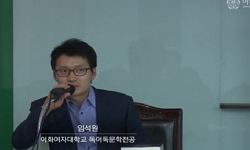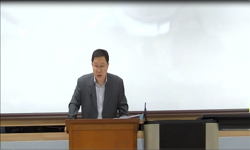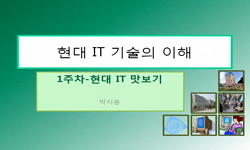This paper corresponds to an approach to the aspect and perspective of the incorporation of traditional knowledge and modern technology through Chinese novels, focusing on the modern transition period. For example, this paper noted 「Namhongryangjeon...
http://chineseinput.net/에서 pinyin(병음)방식으로 중국어를 변환할 수 있습니다.
변환된 중국어를 복사하여 사용하시면 됩니다.
- 中文 을 입력하시려면 zhongwen을 입력하시고 space를누르시면됩니다.
- 北京 을 입력하시려면 beijing을 입력하시고 space를 누르시면 됩니다.

전통적 지식 서술과 근대적 기술 포착의 공존장-「南洪量傳」을 중심으로- = The Co-existence of Traditional Knowledge Description and Modern Technology Capture -Focusing on 「Namhongryangjeon(南洪量傳)」
한글로보기https://www.riss.kr/link?id=A108660658
-
저자
한의숭 (전남대학교)
- 발행기관
- 학술지명
- 권호사항
-
발행연도
2023
-
작성언어
Korean
-
주제어
19th century ; 「Namhongryangjeon(南洪量傳)」 ; traditional knowledge ; modern technology ; co-existence ; authentic precedent ; a style of writing ; 19세기 ; 「南洪量傳」 ; 전통적 지식 ; 근대적 기술 ; 공존장 ; 전고 ; 글쓰기 방식
-
등재정보
KCI등재
-
자료형태
학술저널
-
수록면
45-74(30쪽)
- 제공처
-
0
상세조회 -
0
다운로드
부가정보
다국어 초록 (Multilingual Abstract)
Of course, 「Namhongryangjeon(南洪量傳)」 alone cannot fully explain the detailed aspects and perspectives of competition and conflict over traditional knowledge and modern technology in Chinese literature novels during the modern transition period. However, starting with 「Namhongryangjeon(南洪量傳)」 it is intended to take one aspect of the embedded perspective on traditional knowledge and modern technology inherent in the works created during the modern transition period. In the end, this point leads to confirming from what perspective the situation surrounding literature- oriented traditional knowledge and material-oriented modern technology is incorporated and reflected in the genre of fiction.
This is confirmed not only in 「Namhongryangjeon(南洪量傳)」, but also in the case of <Kimcheongnammongyurok(金靑楠夢遊錄)>, which is determined as a work in the early 20th century, and the attitude to respond to changes in the times can be confirmed in the novel by using machine-related vocabulary referring to modernization. However, in the perspective inherent in the work, it is seen that while acknowledging the reality of modernization represented by machines, there is a fear of the power of modern machines in both ways. At this level, it is worth noting that a group of Chinese long-length novels from the 19th to the early 20th centuries, including 「Namhongryangjeon(南洪量傳)」 serve as a coexistence field where traditional knowledge and modern technology are combined at the same time. At this time, co-existence refers to a text that emphasizes openness to engage in various discussions using the genre of fiction that can be imagined away from the form and norm-oriented unilateralism of the official text of the collection.
Therefore, it is necessary to change the perspective of the Chinese narrative text of the modern transition period, including the 19th century Chinese character novel, to use various Chinese style as writing methods to convey discussions away from the narrative-oriented genre of fiction. This can be understood as a result of the fact that Chinese novels are read in a way that responds to changes in the times, and that the author base, who can create Chinese-language novels, is willing to reorganize the text into a new writing field. This point is also a part that needs to be delicately and approached through a complex and multi-layered perspective that penetrates the author, reader, and era, away from the genre perspective, so I would like to highlight it in earnest through a later review.
This paper corresponds to an approach to the aspect and perspective of the incorporation of traditional knowledge and modern technology through Chinese novels, focusing on the modern transition period. For example, this paper noted 「Namhongryangjeon(南洪量傳)」, which seems to have been created in the early 20th century. 「Namhongryangjeon(南洪量傳)」 is characterized by the active use of authentic precedent and the use of various Chinese style styles, which is highlighted as a characteristic of Chinese novels in the 19th century entering the modern transition period. At the same time, it is confirmed that the pattern of modern external stimuli is introduced into the work and reflects some of the traditional and modern customs.
Of course, 「Namhongryangjeon(南洪量傳)」 alone cannot fully explain the detailed aspects and perspectives of competition and conflict over traditional knowledge and modern technology in Chinese literature novels during the modern transition period. However, starting with 「Namhongryangjeon(南洪量傳)」 it is intended to take one aspect of the embedded perspective on traditional knowledge and modern technology inherent in the works created during the modern transition period. In the end, this point leads to confirming from what perspective the situation surrounding literature- oriented traditional knowledge and material-oriented modern technology is incorporated and reflected in the genre of fiction.
This is confirmed not only in 「Namhongryangjeon(南洪量傳)」, but also in the case of <Kimcheongnammongyurok(金靑楠夢遊錄)>, which is determined as a work in the early 20th century, and the attitude to respond to changes in the times can be confirmed in the novel by using machine-related vocabulary referring to modernization. However, in the perspective inherent in the work, it is seen that while acknowledging the reality of modernization represented by machines, there is a fear of the power of modern machines in both ways. At this level, it is worth noting that a group of Chinese long-length novels from the 19th to the early 20th centuries, including 「Namhongryangjeon(南洪量傳)」 serve as a coexistence field where traditional knowledge and modern technology are combined at the same time. At this time, co-existence refers to a text that emphasizes openness to engage in various discussions using the genre of fiction that can be imagined away from the form and norm-oriented unilateralism of the official text of the collection.
Therefore, it is necessary to change the perspective of the Chinese narrative text of the modern transition period, including the 19th century Chinese character novel, to use various Chinese style as writing methods to convey discussions away from the narrative-oriented genre of fiction. This can be understood as a result of the fact that Chinese novels are read in a way that responds to changes in the times, and that the author base, who can create Chinese-language novels, is willing to reorganize the text into a new writing field. This point is also a part that needs to be delicately and approached through a complex and multi-layered perspective that penetrates the author, reader, and era, away from the genre perspective, so I would like to highlight it in earnest through a later review.
국문 초록 (Abstract)
물론 「남홍량전」만을 가지고 근대 이행기 한문소설에서 전통적 지식과 근대적 기술을 둘러싼 각축과 갈등의 세부적 양상과 시각을 온전히 설명할 수는 없다. 다만 「남홍량전」을 필두로 근대 이행기에 창작된 작품 속에 내재된 전통 지식과 근대적 기술에 대한 착종된 시선의 일면 간취하고자 하는 것이다. 이 점은 결국 근대 이행기를 중심으로 문헌 중심 전통 지식과 물질 중심 근대 기술을 둘러싼 국면이 소설이라는 장르 속에 어떤 시각으로 습합, 반영되고 있는지 확인하는 것으로 연결된다.
이 점은 「남홍량전」뿐만 아니라, 같은 20세기 초 작품으로 비정되는 「金靑楠夢遊錄」의 경우에도 확인되는 것으로 근대화를 지칭하는 기계 관련 어휘들을 사용함으로써 시대 변화에 반응하는 태도를 소설 속에서 확인할 수 있다. 하지만 작품에 내재된 시선 속에서는 기계로 대변되는 근대화의 현실을 인정함과 동시에 근대적 기계의 위력에 대한 공포가 양가적으로 존재하는 게 엿보이기도 한다. 이런 차원에서 「남홍량전」을 위시한 일군의 19~20세기 초 한문장편소설은 전통적 지식과 근대적 기술이 동시에 습합된 공존장의 역할을 하는 텍스트로 주목할 필요가 있다. 이때 공존장이란 문집이라는 공식적 텍스트가 가진 형식과 규범 지향의 일방성에서 벗어나 상상이 가능한 소설이란 장르를 활용해 다양한 의론을 펼칠 수 있는 개방성이 강조된 텍스트를 지칭한다.
따라서 19세기 한문장편소설을 위시한 근대 이행기 한문서사 텍스트에 대해서는 소설이라는 서사 중심적 장르 관점에서 벗어나 의론을 전달하기 위해 다양한 한문 문체 양식이 글쓰기 방식으로 활용, 구현된 텍스트로 관점을 전환시킬 필요가 있다. 이는 시대 변화에 한문소설이 대응하는 방식으로 읽힘과 동시에 특히 한문장편소설을 창작할 수 있는 작가층이 새로운 글쓰기의 장으로 텍스트를 재편하려는 의지가 투영된 결과로 이해할 수 있을 듯하다. 이 점은 비단 장르적 관점에서 벗어나 작가와 독자, 시대를 관통하는 복합적이고 중층적 시각을 통해 섬세하게 접근할 필요가 있는 부분이기 때문에 후고를 통해 본격적으로 조명하고자 한다.
본고는 근대이행기를 중심으로 전통적 지식과 근대적 기술이 착종되는 양상과 시각을 한문소설을 통해 접근한 것에 해당된다. 본고에서는 일례로 20세기 초에 창작된 것으로 보이는 「南洪...
본고는 근대이행기를 중심으로 전통적 지식과 근대적 기술이 착종되는 양상과 시각을 한문소설을 통해 접근한 것에 해당된다. 본고에서는 일례로 20세기 초에 창작된 것으로 보이는 「南洪量傳」을 주목하였다. 「남홍량전」은 근대 이행기로 접어드는 19세기 한문소설의 특징으로 부각되는 전고의 적극적 사용과 다양한 한문 문체 양식의 활용이 두드러지게 나타난다. 그러면서도 근대적 외부 자극이 인입된 양상을 작품 속에 틈입시켜서 전통과 근대의 습합을 일정 부분 반영한 양상이 확인되기도 한다.
물론 「남홍량전」만을 가지고 근대 이행기 한문소설에서 전통적 지식과 근대적 기술을 둘러싼 각축과 갈등의 세부적 양상과 시각을 온전히 설명할 수는 없다. 다만 「남홍량전」을 필두로 근대 이행기에 창작된 작품 속에 내재된 전통 지식과 근대적 기술에 대한 착종된 시선의 일면 간취하고자 하는 것이다. 이 점은 결국 근대 이행기를 중심으로 문헌 중심 전통 지식과 물질 중심 근대 기술을 둘러싼 국면이 소설이라는 장르 속에 어떤 시각으로 습합, 반영되고 있는지 확인하는 것으로 연결된다.
이 점은 「남홍량전」뿐만 아니라, 같은 20세기 초 작품으로 비정되는 「金靑楠夢遊錄」의 경우에도 확인되는 것으로 근대화를 지칭하는 기계 관련 어휘들을 사용함으로써 시대 변화에 반응하는 태도를 소설 속에서 확인할 수 있다. 하지만 작품에 내재된 시선 속에서는 기계로 대변되는 근대화의 현실을 인정함과 동시에 근대적 기계의 위력에 대한 공포가 양가적으로 존재하는 게 엿보이기도 한다. 이런 차원에서 「남홍량전」을 위시한 일군의 19~20세기 초 한문장편소설은 전통적 지식과 근대적 기술이 동시에 습합된 공존장의 역할을 하는 텍스트로 주목할 필요가 있다. 이때 공존장이란 문집이라는 공식적 텍스트가 가진 형식과 규범 지향의 일방성에서 벗어나 상상이 가능한 소설이란 장르를 활용해 다양한 의론을 펼칠 수 있는 개방성이 강조된 텍스트를 지칭한다.
따라서 19세기 한문장편소설을 위시한 근대 이행기 한문서사 텍스트에 대해서는 소설이라는 서사 중심적 장르 관점에서 벗어나 의론을 전달하기 위해 다양한 한문 문체 양식이 글쓰기 방식으로 활용, 구현된 텍스트로 관점을 전환시킬 필요가 있다. 이는 시대 변화에 한문소설이 대응하는 방식으로 읽힘과 동시에 특히 한문장편소설을 창작할 수 있는 작가층이 새로운 글쓰기의 장으로 텍스트를 재편하려는 의지가 투영된 결과로 이해할 수 있을 듯하다. 이 점은 비단 장르적 관점에서 벗어나 작가와 독자, 시대를 관통하는 복합적이고 중층적 시각을 통해 섬세하게 접근할 필요가 있는 부분이기 때문에 후고를 통해 본격적으로 조명하고자 한다.
참고문헌 (Reference)
1 차용주, "한국한문소설사" 아세아문화사 1989
2 김기동, "한국고전소설연구" 교학사 1981
3 김경미, "지식 형성과 사유의 장(場)으로서의 소설의 가능성 - <삼한습유>를 중심으로" 한국고전연구학회 (26) : 335-364, 2012
4 진재교, "조선조 후기 類書의 형성과정과 지식․정보 분류의 知識史" 한국실학학회 (40) : 427-474, 2020
5 황위주 ; 김대현 ; 김진균 ; 이상필 ; 이향배, "일제강점기 전통지식인의 문집 간행 양상과 그 특성" 한국고전번역원 41 : 203-296, 2013
6 임치균, "역주 남홍량전" 한국학중앙연구원출판부 2022
7 서신혜, "김소행의 글쓰기 방식과 삼한습유" 박이정 2004
8 조용호, "개화기 한문소설의 주제의식" 한국문학이론과비평학회 6 (6): 215-248, 2002
9 "金靑楠夢遊"
10 한의숭, "片玉奇遇記 의 소설사적 성격에 대하여" 한국어문학연구학회 47 : 91-116, 2006
1 차용주, "한국한문소설사" 아세아문화사 1989
2 김기동, "한국고전소설연구" 교학사 1981
3 김경미, "지식 형성과 사유의 장(場)으로서의 소설의 가능성 - <삼한습유>를 중심으로" 한국고전연구학회 (26) : 335-364, 2012
4 진재교, "조선조 후기 類書의 형성과정과 지식․정보 분류의 知識史" 한국실학학회 (40) : 427-474, 2020
5 황위주 ; 김대현 ; 김진균 ; 이상필 ; 이향배, "일제강점기 전통지식인의 문집 간행 양상과 그 특성" 한국고전번역원 41 : 203-296, 2013
6 임치균, "역주 남홍량전" 한국학중앙연구원출판부 2022
7 서신혜, "김소행의 글쓰기 방식과 삼한습유" 박이정 2004
8 조용호, "개화기 한문소설의 주제의식" 한국문학이론과비평학회 6 (6): 215-248, 2002
9 "金靑楠夢遊"
10 한의숭, "片玉奇遇記 의 소설사적 성격에 대하여" 한국어문학연구학회 47 : 91-116, 2006
11 진재교, "朝鮮朝 後期 縱的 秩序와 學藝의 公論場-지식의 생성·유통과 관련하여-" 우리한문학회 45 : 301-346, 2021
12 정재윤, "南洪量傳 연구" 한국학중앙연구원 2016
13 "南洪量傳"
14 한의숭, "光山 金氏 惟一齋 宗宅 소장 고전소설의 유전 양상과 성격" 동양한문학회 58 : 469-491, 2021
15 엄태식, "「洞仙記」 典故 연구" 동방한문학회 (76) : 103-132, 2018
16 임치균, "「南洪量傳」의 서사구조와 내용적 특징" 영주어문학회 45 : 87-117, 2020
17 정길수, "<洛東野言> 연구 -17세기 소설 전통과 맺은 관계" 한국고소설학회 (43) : 197-229, 2017
18 한의숭, "<吳後姜傳>의 서사방식과 인물 형상 연구" 민족문화연구소 (51) : 353-382, 2012
19 김경미, "<南洪量傳> 연구" 한국고소설학회 (12) : 263-292, 2001
20 한의숭, "20세기 초 일제 강점기 향촌재지사족의 漢文懸吐小說 창작에 대한 一考 –<神機圖>와 <太極翁傳>을 중심으로 -" 동양한문학회 44 : 363-387, 2016
21 한의숭, "19세기 한문중단편소설의 세계" 경진출판 1-273, 2017
22 이기대, "19세기 한문장편소설 연구 : 창작 기반과 작가의식을 중심으로" 고려대학교 대학원 2004
23 이병직, "19세기 한문장편소설 연구" 부산대학교 대학원 2001
24 이길환, "19세기 중⋅장편한문소설의 전고 운용에 대한 시론적 고찰- 「오후강전」⋅「유생전」⋅「효열지」를 중심으로-" 영주어문학회 53 : 249-277, 2023
25 장예준, "19세기 소설론의 장(場)과 그 담론들 -소설 서문과 평비문을 중심으로" 민족문학사연구소 (60) : 129-161, 2016
동일학술지(권/호) 다른 논문
-
한중 필담 자료에 나타난 복식문제에 대한 새로운 시각 -동아시아 필담 연구의 방법론을 겸하여-中韩笔谈文献中的衣冠问题新探——— 兼谈东亚笔谈的研究方法-
- 우리한문학회
- 장보웨이
- 2023
- KCI등재
-
- 우리한문학회
- 진민희
- 2023
- KCI등재
-
한문 산문사 서술에서의 ‘의고’, ‘법고’, ‘창신’에 대한 재고
- 우리한문학회
- 하지영
- 2023
- KCI등재
-
17세기 閭巷人의 經書 해석과 明代 思潮 受容-高時彦의 「讀書箚錄」을 중심으로
- 우리한문학회
- 강민형
- 2023
- KCI등재




 KCI
KCI KISS
KISS






